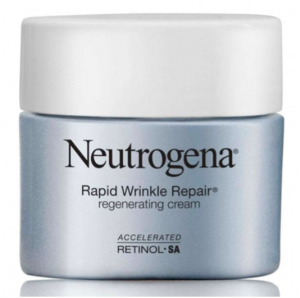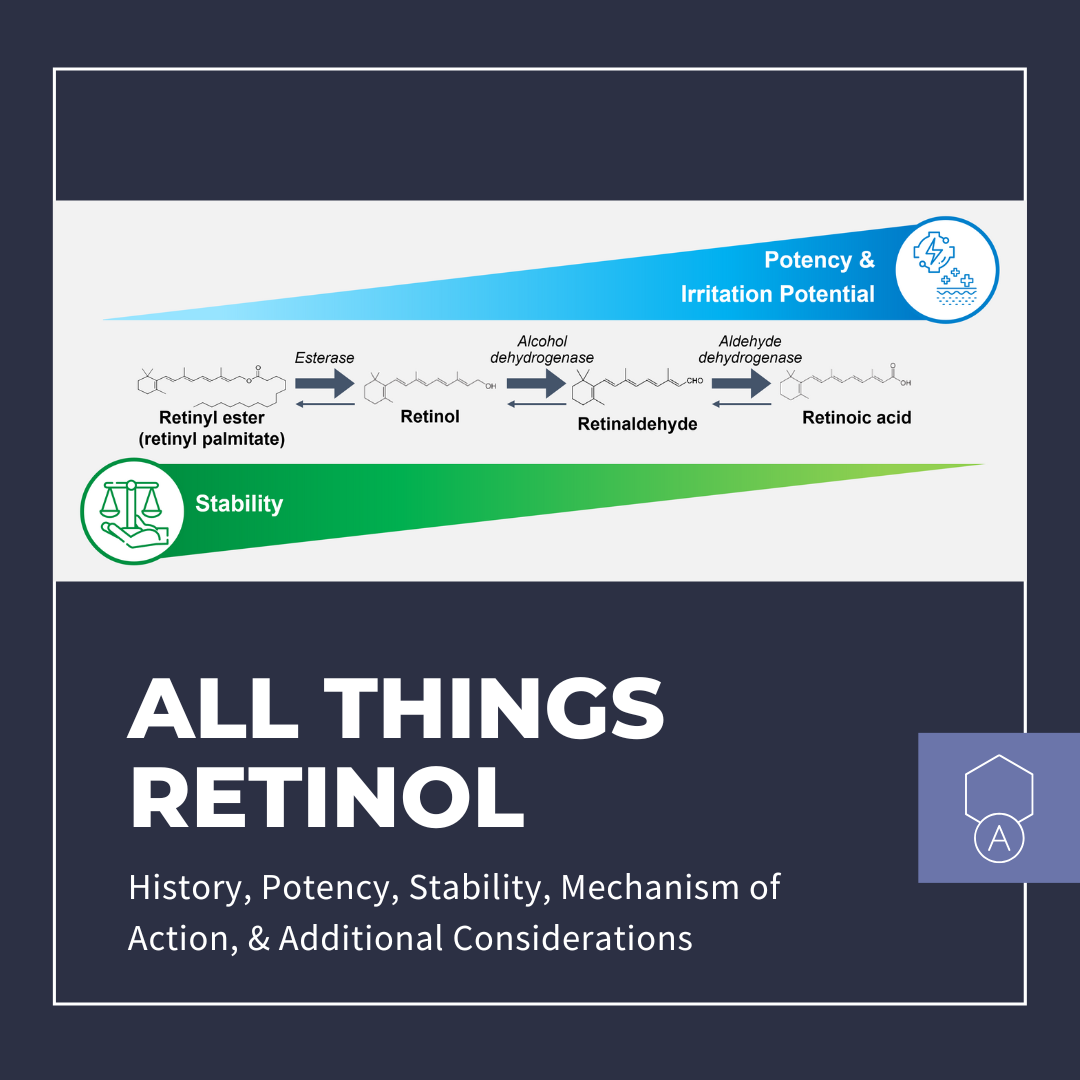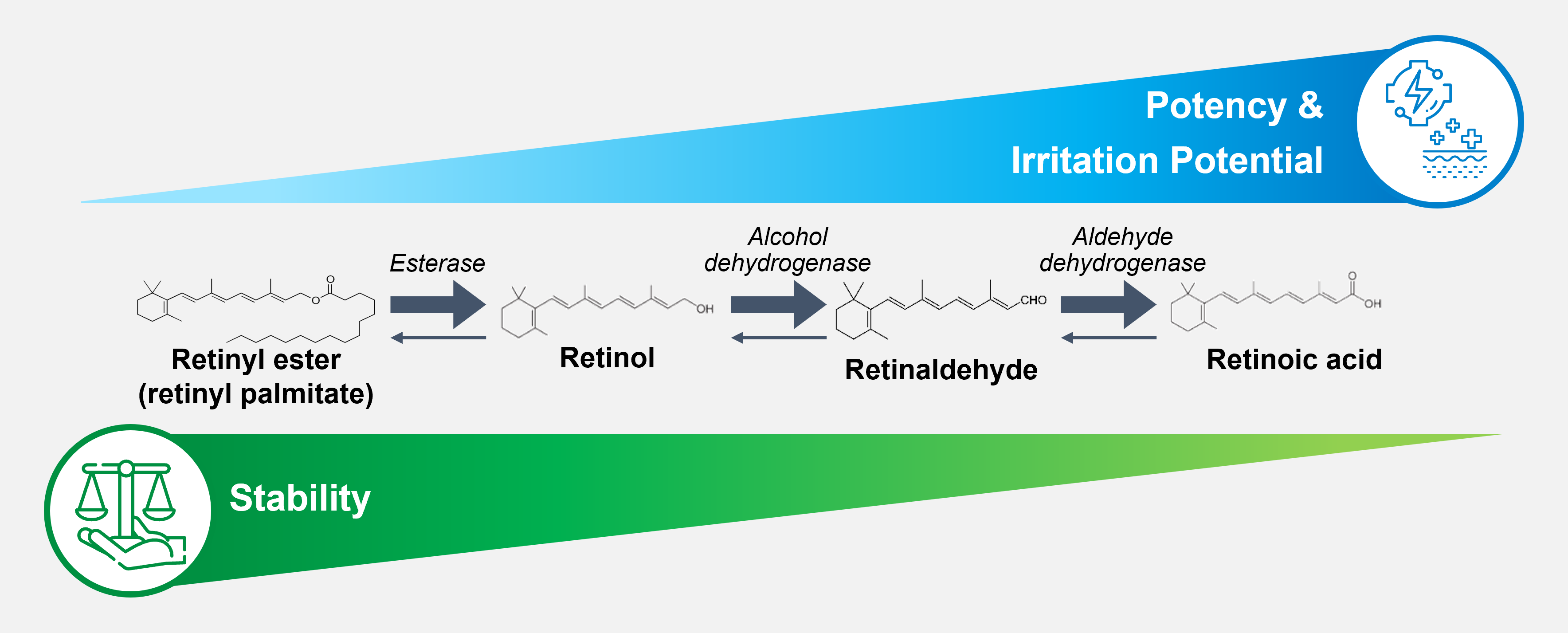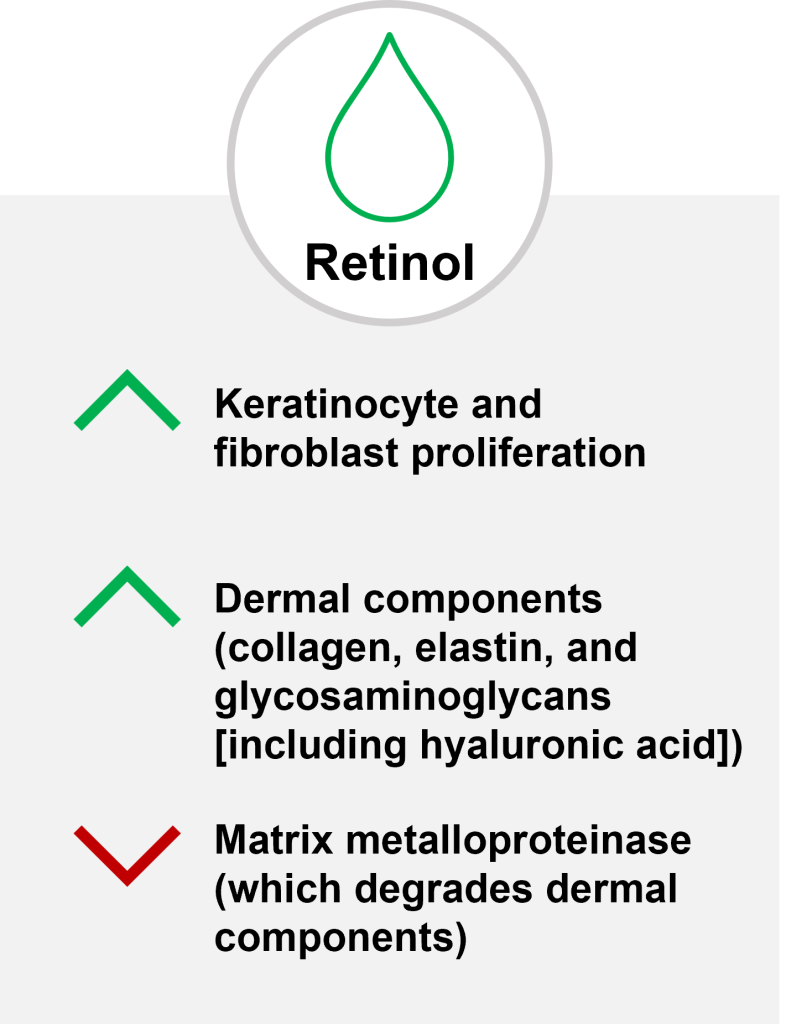Introduction to Retinol
Vitamin A and its derivatives have been utilized in both prescription and cosmetic over‑the‑counter (OTC) anti-aging creams for decades. Retinol, a form of Vitamin A, has been shown to improve the appearance of collagen-depleted skin, complement skin’s natural renewal process, and fight signs of aging. Retinol was discovered over a century ago, but it wasn’t until 1997 that stabilized retinol creams developed by Johnson & Johnson were made available in the United States.
Retinoids: Relative Potency, Irritation Potential, and Stability
Retinoids come in several active forms; the most potent and often unstable retinoid is retinoic acid (used in prescription formulations), followed by the OTC cosmetic retinoids: retinaldehyde, retinol, and retinyl ester (the least potent and most stable retinoid). In addition to decreasing stability, higher-activity retinoids also increase the potential for irritation. While many patients may want the strongest active ingredient for their skin, the relationship between therapeutic activity and the potential for irritation means that 1 size does not fit all. Higher percentages of OTC cosmetic retinoids in a product also do not necessarily guarantee better efficacy. For example, a lower-percentage retinol with a controlled-release formulation may outperform a higher-percentage retinol, as the controlled-release emollient technology helps protect the stability and bioactivity of the retinol. Additionally, while prescription-strength retinoids can be prepared when a patient fills their prescription, the stabilized, lower-activity retinoids are better suited for OTC cosmetic formulations, which will likely spend more time on the shelf (or in the medicine cabinet).
Retinol Under the Microscope—In vivo Activity
Retinol enhances keratinocyte and fibroblast proliferation and normalizes differentiation. Normally, keratinocyte cell turnover takes about 28 days, but retinol can reduce this time to approximately 14 days. Additionally, transforming growth factor β is upregulated by retinol, leading to improved collagen and elastin production. The effect of retinol on collagen is 2-fold: production is increased, and the rate of degradation is decreased. Epidermal growth factors are also upregulated by retinol, aiding epidermal repair and cellular proliferation while downregulating matrix metalloproteinases, which degrade collagen and elastin. Production of glycosaminoglycan and hyaluronic acid, which help to maintain proper skin form and hydration, are also increased by retinol.
Retinol Clinical Showcase
In a 52-week, double-blind, vehicle-controlled study, topical stabilized retinol significantly improved (P ≤ .05) photodamaged skin versus its vehicle when applied to the entire face. The study enrolled female patients aged 40–55 years with Fitzpatrick skin type I–III, overall facial photodamage score of 4–8, crow’s feet coarse wrinkling score of 4–6, and mottled pigmentation score of 3–5 on a 1–9 (least to most severe) scale. After 52 weeks, the stabilized retinol group experienced a 44% improvement in crow’s feet fine lines, an 84% improvement in mottled pigmentation, and a 2+ grade improvement in several other parameters in 50% or more of patients.1
A companion study investigated histological changes in patients who applied either stabilized retinol or its vehicle to forearms. At week 52, histochemical data showed that expression of type I procollagen (a precursor to collagen), hyaluronic acid, and Ki67 (a protein associated with cellular proliferation) were increased by stabilized retinol versus its vehicle. Taken together, these results suggest that stabilized retinol can improve photoaging symptoms with long-term use.1
Additional Considerations
Most patients tolerate retinoids well, but those with a retinoid sensitivity, or patients who use too much retinoid may experience retinoid dermatitis, which collectively refers to erythema, scaling, burning, and itching. Additionally, heat sensitivity and photosensitivity may accompany these symptoms. These effects are all dose dependent, so dermatologists can recommend several strategies to mitigate side effects: (1) avoid applying retinoids to sensitive parts of the face (eg, around the eyes), (2) start with gradual retinoid use rather than daily application, (3) switch from a higher-activity retinoid like retinoic acid to a milder retinoid like retinol, (4) use controlled-release retinol to reduce the amount of free retinol on the skin, and (5) layer moisturizer with retinoid.
When first starting a retinoid regimen, patients may experience skin purging—increased cell turnover brings a temporary increase in skin redness, pimples, and bumps. Dermatologists should inform patients that their skin may look worse during the first 3–4 weeks of retinoid use; benefits of a new skincare regimen require multiple weeks to manifest. Anytime a new skincare regimen is initiated, dermatologists should set appropriate expectations with patients, which includes a discussion about:
-
- How long a jar of retinol lasts
- When the patient will start to see improvements in skin
- When it would it be appropriate to add an additional component to the patient’s skincare regimen

Some patients may be tempted to take a break from retinoid use because of concerns that continuous use will lead to a plateau in benefits, but this idea is unfounded. As discussed above, production of type I procollagen, Ki67 expression, and hyaluronic acid were all increased at week 52 with the application of topical stabilized retinol versus its vehicle.1 In fact, while efficacy does not subside with long-term use, the side effects might become less evident over time. Irritation does not equate to efficacy.
Summary
Retinoids have become a powerhouse ingredient in anti-aging skincare products, with different formulations for different patients. Retinoids speed up skin cell turnover, resulting in supple, youthful skin. Results from a pair of clinical studies of retinol versus its vehicle show that retinol significantly improves symptoms of photoaging, including crow’s feet fine lines and mottled pigmentation. Patients with retinoid sensitivity can progress slowly to daily application, switch to a less irritable OTC formulation, or utilize a controlled-release retinoid to avoid retinoid dermatitis while reaping the benefits of consistent retinoid application. An Instagram Live post featuring a discussion of retinol between Dr Mariwalla and Dr Fahs can be viewed here.
Product to Consider
Neutrogena® Rapid Wrinkle Repair® Regenerating Cream

Visibly reduces fine lines and wrinkles for smoother looking skin
Reference
-
- Randhawa M, et al. J Drugs Dermatol. 2015;14(3):271−280.
This article is brought to you by Next Steps in Derm in Partnership with Johnson & Johnson Consumer Health.
Did you enjoy this article? Find more on our OTC Resource Center.



